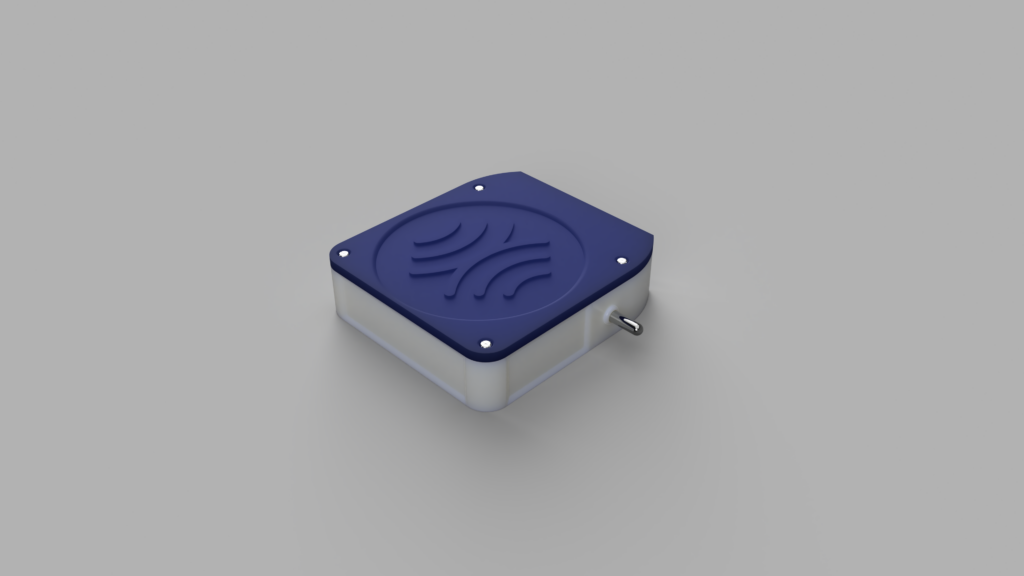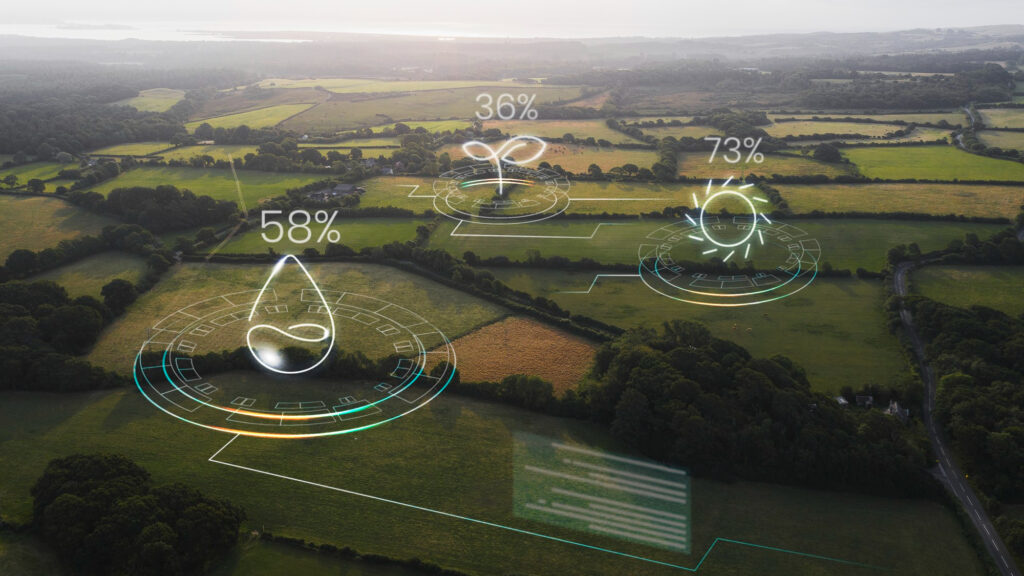IoT devices (Internet of Things) is a very broad concept according to which devices in a specific network communicate using specific protocols, during this exchange, for example, data from various types of sensors are transmitted, as well as signals that allow the activation of devices controlled by the IoT network. The most readily available Internet of Things devices are smart home products such as cleaning robots, smart light bulbs, air purifiers or washing machines and refrigerators. However, these are not all the applications of the IoT concept because we can very often encounter the concept while driving a car or checking the air quality in a particular city because IoT makes it possible to share data on virtually any topic, starting with traffic analysis, through IoT applications examining the efficiency of production processes and ending with smart home systems.
The design of devices related to IoT and IIoT (Industrial Internet of Things) technology often proceeds differently from products that do not assume the use of the Internet of Things. In order for the process of creating an Iot product to be fully effective, we need to define the values on the basis of which our device will be created. The IoT devices we most often design for our clients are usually products that are supposed to meet two main conditions - the device is to be as small as possible and it is to be optimized to run as long as possible on a single charge, so let's focus on such projects and discuss some points that may be relevant when planning the application of IoT technology.
IoT device sizing
As the development of electronic components progresses, we can achieve smaller and smaller sizes for our devices, in addition, newer chips allow us to optimize power consumption so that devices can run longer with smaller and cheaper batteries. When we are dissecting the concept of IoT devices that we are going to implement we need to think about what size of device we want to achieve, depending on the application we can afford different size variants. If we are creating a device for supervising production processes, where the Internet of Things improves the accuracy of production machines, we can afford to create a device of larger size, additionally powered by the electric grid so that we reduce the costs associated with miniaturization and replacement of the battery when discharged. However, if we are creating devices such as IoT sensors that study air quality in cities, then by design we must take into account that the difficulty of designing such a device will be somewhat greater due to the necessary miniaturization and optimization of the device's operation under battery power, which must be replaced as rarely as possible
It is also worth remembering that an electronic device does not consist only of integrated circuits, a PCB and a battery, most often the complementary and most human-exposed part of the device is its housing. In the case of Internet of Things solutions that are not intended to be visible to humans, we usually focus on features such as waterproofness and ease of power replacement, but the industrial Internet of Things is characterized by slightly different values - here we additionally need to ensure that the device is properly protected and not damaged. The features of enclosures for IoT devices often mean that we need to add about 25% tolerance to the expected dimension of our device - so that the industrial design designer has adequate room to work and create a device tailored to the required conditions. In order to take care of every aspect of the work we do at Device Prototype, we conduct a significant amount of testing of our designs so that the devices we bring to market are tailored to the customer's needs and free from the dangers of possible damage.

Internet of things vs. connectivity technologies
When we think of the Internet of Things we usually think in the context of wireless connectivity technologies, we can safely assume that 99.9% of IoT devices communicate with the network only wirelessly. Wireless connectivity gives us huge benefits related to the lack of restrictions on location and network infrastructure at our product deployment sites. Today, IoT devices mostly use WIFI, BLE (Bluetooth Low Energy) connectivity and cellular networks. In order to determine what technologies we need to implement in our devices based on the idea of the Internet of Things, we need to think about the exact conditions in which we want our product to work. If we are going to introduce smart IoT applications into the factories of our customers, who have a developed WIFI network throughout the facility, then without much thought we should abandon other wireless connectivity technologies - convenience in management, ease of updating and fast data transfer are the biggest advantages.
In the case where we do not have the possibility to use WIFI but the device does not require continuous data transfer and monitoring of IoT resources, we can use BLE technology, in which case the device will pair with the main host that will manage the data used by smart IoT applications or with a phone or other device equipped with IoT applications allowing the current display of read data and directing it from the smart device to the default server.
When the device we want to deploy requires continuous data transfer, and we don't have access to WIFI and BLE we are forced to use other technologies and build IoT devices equipped with components such as modems that support cellular networks. The big advantage of using cellular networks such as GSM, LTE or NB-IoT is that they communicate with local base stations and provide stable connectivity in most countries around the world, this makes it possible to apply IoT anywhere.
Of course, in addition to the above-mentioned connectivity technologies, there are many more ways to develop the Internet of Things using, for example, connectivity such as LoRaWAN or ZigBee, but it is WIFI, BLE and cellular network transmission that best fits the concept of IoT devices and it is these technologies that we use most often.

IoT applications - or how to conveniently read data from Internet of Things systems
The application of the Internet of Things most often involves receiving a large amount of data from a significant number of devices, this makes it necessary for us to sort and filter this data for generating specific reports for users. It is through IoT applications created in a readable way that we gain access to monitor IoT data in an easy way. However, even before creating a web service, it is worth defining the tasks that the system will take on. Because IoT enables intelligent sharing of data from a variety of sensors in many forms and from many locations, we need to decide at the outset what categories the data from each device should go into. A good example of this would be weather measurement systems, some IoT devices equipped with temperature and humidity sensors will go to a different category of data than data from IoT sensors detecting water levels in bodies of water. When we analyze a smart home system, too, we notice that, for example, data on electrical outlets goes into different categories than data from window opening systems. The method of grouping data by device type has long been used by IoT device manufacturers, so we get a clear view of every smart device in our home.
Once we know how we want to sort the data in our devices, it is worth deciding on the layer of users who will receive access to specific information thanks to IoT. IoT applications also show that the simplicity of the user interface itself and the ability to modify the operation of a given smart device from anywhere are also very important.
At Device Prototype, we focus on the needs of our clients during the development of a full IoT system design and carefully communicate the possible facilitators at each layer of the design so that the data coming to the user is personalized and easy to analyze and generate reports.

Designing an IoT solution in practice
To ensure the proper operation of each component of the device, it is worthwhile even before the start of the project to dissect all the required functionality. During the implementation, the security aspects of the Internet of Things are very important, the products we design have to be reliable and enable operation without interfering with the activities of people and other devices, this is especially important when we have in mind the industrial Internet of Things. At each stage we have to validate our assumptions and check the operation of the system so that the product fully fulfills its purpose. After many projects completed for our clients, we can confidently define a precise path for conducting such a project
- Market research - checking similar products, analyzing user needs, applying IoT solutions in similar sectors
- Precise definition of functionality - selecting specific functions that will make the use of IoT devices most desirable to target customers
- Creation of electronic design and construction of initial prototypes
- Electronic circuit testing - verifying that our IoT devices allow us to use them for planned tasks
- Chassis design and prototype manufacturing - making the design in accordance with the requirements related to the device's operating environment
- Testing of the device with the enclosure - verification of the original functional assumptions
- Device manufacturing
- Process development with the help of IoT devices
If you are interested in doing a full design of an IoT device including enclosure and control system, please feel free to contact us, we will be happy to design your next great working product!


